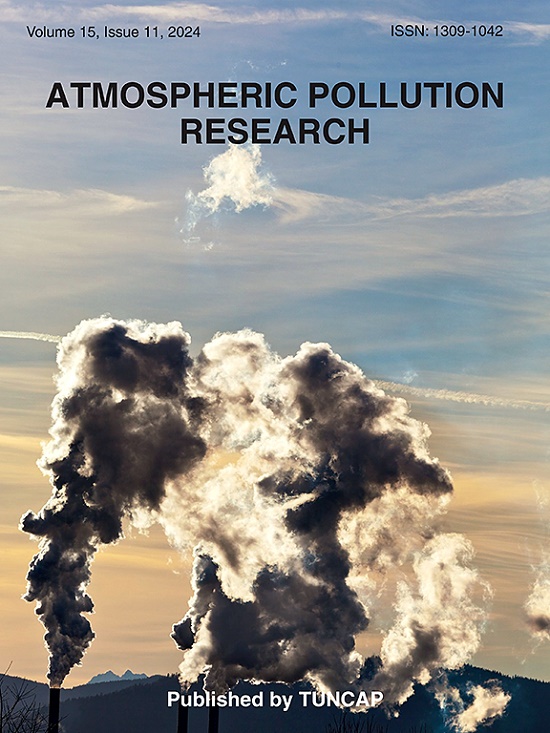Identification and characterization of the source water-insoluble single particulate matter in rain events in the province of Isparta
IF 3.9
3区 环境科学与生态学
Q2 ENVIRONMENTAL SCIENCES
引用次数: 0
Abstract
Analyzing atmospheric pollutants in rainwater is crucial for evaluating the environmental impacts of both natural and anthropogenic pollution sources. Literature review indicates that air pollution studies commonly employ the collection of particulate matter (PM) on filters for subsequent analysis. However, this approach may result in significant particle accumulation on the filters, thereby complicating their characterization through semi-quantitative analytical techniques. This study characterized insoluble particulate matter from sequentially collected rainwater samples based on particle size, morphology, and chemical composition. Scanning Electron Microscopy (SEM) coupled with Energy Dispersive X‒Ray Spectrometry (EDS) and a particle size analyzer were utilized. Integrating SEM‒EDS data with particle size distribution analyses, chemical composition results, and upper atmospheric back-trajectory modeling made it possible to identify specific sources of insoluble particles in the rainwater samples. The rainwater samples were also analyzed for pH, electrical conductivity, and major anions and cations. The pH values ranged from 5.92 to 7.43, and electrical conductivity values varied between 6.19 and 102.4 μS/cm. Among the major ions, relatively high concentrations of Ca2+, SO42−, and NO3⁻ were detected, while lower concentrations of F⁻, Mg2⁺, Na⁺, and Cl⁻ were observed. Elevated Ca2+, Mg2+, K⁺, and F⁻ levels were linked to local anthropogenic activities, including agricultural practices, biomass burning, and vehicular emissions. Conversely, NH4+, SO42−, and NO3− presence was attributed to long-range atmospheric transport. Contributions from sea salt were evidenced by the levels of Cl− and Na⁺ ions.

求助全文
约1分钟内获得全文
求助全文
来源期刊

Atmospheric Pollution Research
ENVIRONMENTAL SCIENCES-
CiteScore
8.30
自引率
6.70%
发文量
256
审稿时长
36 days
期刊介绍:
Atmospheric Pollution Research (APR) is an international journal designed for the publication of articles on air pollution. Papers should present novel experimental results, theory and modeling of air pollution on local, regional, or global scales. Areas covered are research on inorganic, organic, and persistent organic air pollutants, air quality monitoring, air quality management, atmospheric dispersion and transport, air-surface (soil, water, and vegetation) exchange of pollutants, dry and wet deposition, indoor air quality, exposure assessment, health effects, satellite measurements, natural emissions, atmospheric chemistry, greenhouse gases, and effects on climate change.
 求助内容:
求助内容: 应助结果提醒方式:
应助结果提醒方式:


